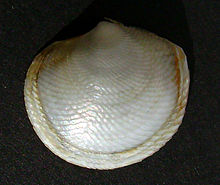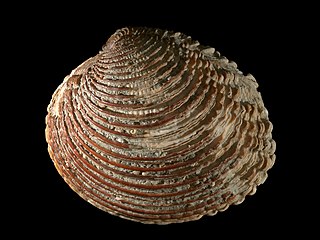
The Veneridae or venerids, common name: Venus clams, are a very large family of minute to large, saltwater clams, marine bivalve molluscs. Over 500 living species of venerid bivalves are known, most of which are edible, and many of which are exploited as food sources.

Mactridae, common name the trough shells or duck clams, is a family of saltwater clams, marine bivalve mollusks in the order Venerida.

Solemyidae is a family of saltwater clams, marine protobranch bivalve mollusks in the order Solemyida.

Vesicomyidae is a family of saltwater clams, marine bivalve molluscs in the superfamily Glossoidea.
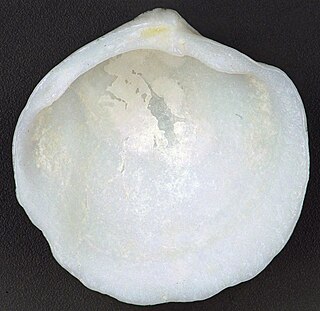
Lucina pensylvanica, commonly known as the Pennsylvania lucine, is a species of bivalve mollusc in the family Lucinidae.

Codakia orbicularis, or the tiger lucine, is a species of bivalve mollusc in the family Lucinidae. It can be found along the Atlantic coast of North America, ranging from Florida to the West Indies.

Ctena orbiculata, commonly known as the dwarf tiger lucine, is a species of bivalve mollusc in the family Lucinidae. It can be found along the Atlantic coast of North America, ranging from North Carolina to the West Indies.

Codakia is a genus of saltwater clams, marine bivalve molluscs in the family Lucinidae.
In ecology, sulfide intrusion refers to an excess of sulfide molecules (S2-) in the soil that interfere with plant growth, often seagrass.
Stewartia floridana is a bivalve of the family Lucinidae that is chemosymbiotic with sulfur-oxidizing bacteria.

Lucina is a genus of saltwater clams, marine bivalve molluscs.

Codakia distinguenda, the elegant lucine, is a species of marine bivalve mollusc. It was first described to science in 1872 by George Washington Tryon Jr.

Radiolucina is a genus of bivalves belonging to the family Lucinidae.
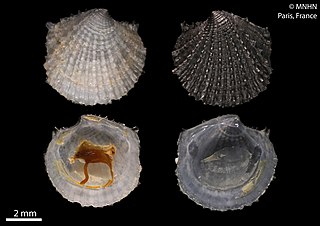
Lucinisca is a genus of saltwater clams, marine bivalve molluscs in the subfamily Lucininae of the family Lucinidae.

Lucinoma is a genus of saltwater clams, marine bivalve molluscs in the subfamily Codakiinae of the family Lucinidae.
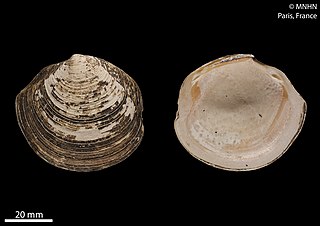
Phacoides is a genus of bivalves belonging to the family Lucinidae.

Rostrilucina is a genus of bivalves on the subfamily Myrteinae, belonging to the family Lucinidae.
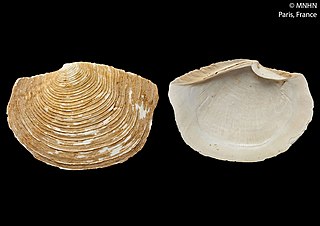
Taylorina is a genus of bivalves on the subfamily Myrteinae, belonging to the family Lucinidae.

Troendleina is a chemosymbiotic bivalve genus in the subfamily Lucininae of the family Lucinidae.

Wallucina is a chemosymbiotic bivalve genus in the subfamily Lucininae of the family Lucinidae.
